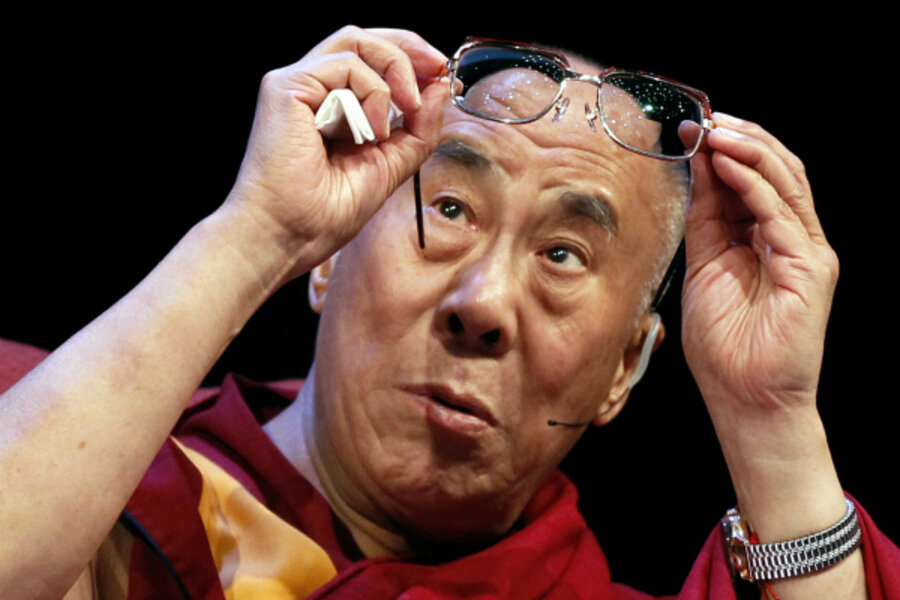Warby Parker may have a better 'buy one, give one' model
Loading...
We already know that good marketing does not equal good aid. Toms Shoes has earned a fair amount of criticism for its “One for One” model – a pair of shoes is donated to a child in need for every pair bought by the consumer. But, after seeing the marketing benefits, more and more for-profit businesses are using a similar model to donate goods in developing countries.
Here's the basic problem of the “One for One” model: When everyone in a community can get a free pair of shoes, the local shoe vendor goes out of business. Not only does it hurt the local economy, but it is also a short-term solution that creates long-term problems.
Toms model may also encourage poverty tourism, as the company allows people to pay to travel along with distribution trips as shoe fitters. Niharika Jain writes more in-depth about the unintended consequences of charitable giving for the Harvard Crimson, and Peace Corps volunteer Zachary Mason discusses Toms Shoes from a public health perspective, questioning the cost-effectiveness of the model for reducing disease.
RELATED: 10 entrepreneurs who changed the world
Despite the unintended consequences of its “One for One” program, Tom's has a cult following. Chances are if you don’t already have a pair, you know someone who does. Is Toms merely a fashion statement, or are consumers drawn to the company for its cause, creating an atypical status symbol?
It’s hard to know what motivates individual purchases of Toms products, but a 2010 Cone Cause Evolution study shows that 85 percent of consumers surveyed feel more positively about companies that support a cause they care about. When price and quality are equal, most consumers choose the product supporting the cause.
If we want to be socially conscious consumers, it’s important to understand the impact of Toms and similar products. We can learn from Toms' marketing success, but to alleviate poverty in the long-term we need to promote sustainable programs the support local economic development.
Warby Parker, another for-profit enterprise that donates its product in developing countries, is getting a lot of attention for the innovative way that it sells eyewear to the consumer and sends glasses around the world to people who can’t afford them – earning them the B Corp status. Like Toms, they are popular among the fashion conscious and have a hugely successful marketing campaign.
Warby Parker partners with a nonprofit called Vision Spring in order to donate their glasses abroad. Vision Spring is in tune with how local economies function and what kind of products are culturally appropriate – something that Warby Parker itself may not have the resources to know. Vision Spring receives funding and glasses from Warby Parker to train low-income local entrepreneurs to start their own businesses selling glasses at affordable prices.
Warby Parker uses the same “buy one, give one” strategy as Toms, which is successful at attracting consumers, but is sensitive to the impact donations have on local economies. Warby Parker and Vision Spring’s mission is to help entrepreneurs sustain a business and to create jobs – not create a dependency on unpredictable donations, which unintentionally creates economic stagnation.
As socially conscious consumers, we should reserve some skepticism for businesses that claim to do good. Transparency and randomized studies are need in order to assess their impact. A recent randomized control trial by the University of Michigan found that people who bought Vision Spring glasses earned 20 percent more, but more research is needed. It is also promising that Vision Spring is continually learning and evolving its strategy to increase its impact, as recognized by Duke's Fuqua School of Business Center for the Advancement of Social Entrepreneurship.
This partnership between a for-profit business and a nonprofit looks promising and solves some of the problems with Toms' “One for One” model.
“Give a man a fish and you feed him for a day; teach a man to fish and you feed him for a lifetime,” is what we’re told. It’s an excellent example of the ability of corporations and nonprofits to do what they do well and team up to do good. Hopefully, organizations that inform consumers – like B Corp – will make this kind of partnership more attractive.
Have you bought or would you buy Warby Parker glasses and Toms Shoes? What drew you to the brand?
• Monica Gerber is a 2011 graduate of Reed College. Read her other contributions to Global Envision.
• This article first appeared at Global Envision, a blog published by Mercy Corps.
• Sign-up to receive a weekly selection of practical and inspiring Change Agent articles by clicking here.





